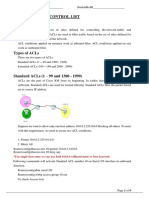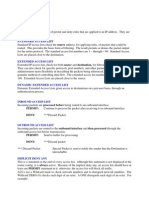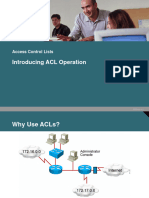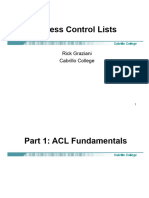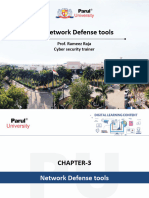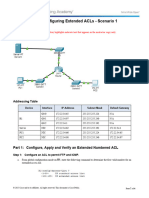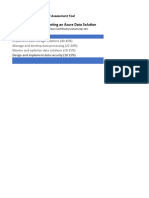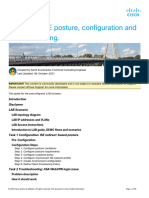0% found this document useful (0 votes)
31 views6 pagesAccess List Tutorial
This tutorial explains access control lists (ACLs), which are used to filter network traffic by permitting or denying IP packets based on specified criteria. It covers three types of ACLs: Standard, Extended, and Named, detailing their configurations and applications on router interfaces. Additionally, it discusses the use of wildcard masks and the differences between numbered and named ACLs, including their placement and limitations.
Uploaded by
Mzamil HassanCopyright
© © All Rights Reserved
We take content rights seriously. If you suspect this is your content, claim it here.
Available Formats
Download as DOCX, PDF, TXT or read online on Scribd
0% found this document useful (0 votes)
31 views6 pagesAccess List Tutorial
This tutorial explains access control lists (ACLs), which are used to filter network traffic by permitting or denying IP packets based on specified criteria. It covers three types of ACLs: Standard, Extended, and Named, detailing their configurations and applications on router interfaces. Additionally, it discusses the use of wildcard masks and the differences between numbered and named ACLs, including their placement and limitations.
Uploaded by
Mzamil HassanCopyright
© © All Rights Reserved
We take content rights seriously. If you suspect this is your content, claim it here.
Available Formats
Download as DOCX, PDF, TXT or read online on Scribd
/ 6











